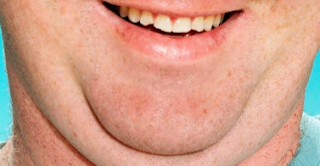We were right next door to the Villa d'Este Restaurant. The
smell of garlic being sautéed in butter would sneak into our tiny ad
agency.
Convenient, 'cause when my partner Tom and I would work late, which was just about every night, we could be seated by the host/owner in minutes after realizing how hungry we were.
And the food. Nino, the diminutive chef with only a few words of English ... his cooking was incredible. His Chicken Saltimbocca could bring a tear to the eye of the most discerning gourmand.
One evening, Tom called the owner over to our table and said, "We love the food. You guys should have more customers. How 'bout we trade marketing and advertising for meals?"
It was a good deal. The restaurant got busier. Our cash flow improved and we loosened our belts a notch.
And a buzz about our agency started circulating in local restaurants. We started doing a brisk business with menu re-writes/redesigns, logos, signage, and ad concepts/production/placement.
We learned a fair amount about the restaurant business. Probably the most important was "Cash in advance. No exceptions."
As the demand for our services grew in this sector, we developed a 15-point checklist we we'd use in "secret shopper" visits before meeting with owners to determine whether or not we would pursue the business. If the restaurant got too many bad grades, we'd pass, knowing that it had issues that marketing and advertising couldn't fix.
If you're working with local restaurants, or want to, maybe our checklist will come in handy:
1. Booking experience (easy? friendly? welcoming? relaxed? quick? helpful?)
2. Signage (visibility? legibility? branding? inviting? explanatory?)
3. Parking lot (inviting? littered? building and landscaping condition?)
4. Restaurant cleanliness (dirty surfaces? smell? in disrepair? neglected?)
5. Restroom conditions (clean? fresh? maintained?)
6. Tabletop: glasses, silverware (clean? spotless? matching? worn?)
7. Menus (design? readability? descriptive? old? stained? torn?)
8. Menu offerings (too many pages? too many items? profit items not highlighted? specials?)
9. Theme: consistent or inconsistent (e.g., French restaurant inside, Florida beach themed patio outside, Italian entrees on the menu or Irish pub decor, Indian cuisine)
10. Management, host/hostess, wait staff engagement (welcoming? bored? attentive? trained? flexible?)
11. Kitchen (clean? organized? chaotic? loud? out-of-control?)
12. Wait time for food and course delivery pacing (short? long? unacceptable?)
13. Orders (correct? delivered to the correct guest?)
14. Food presentation (appetizing? messy? attractive arrangement on plate?)
15. Food (portion size? taste? smell?)
The more we made good restaurants busier, the stronger our reputation became. And word got out to owners of other local businesses, and our little shop got bigger.
The moral of the story: If you want marketing and advertising to work, start with a good product that provides a positive impression on/experience for the targeted consumer.









